Predictive Power Control of Novel N*3-phase PM Energy Storage Motor for Urban Rail Transit
Abstract
1. Introduction
2. The Design of Novel N*3-phase PM Energy Storage Motor
2.1. Characteristic Analysis of N*3-phase PM Energy Storage Motor
2.2. Mathematical Model of N*3-phase PM Energy Storage Motor
3. Topological Structure of N*3-phase PM Energy Storage Motor Drive System
4. Predictive Power Control of Novel N*3-phase PM Energy Storage Motor
4.1. Drive System Structure of N*3-phase PM Energy Storage Motor
4.2. Predictive Power Control of Novel N*3-phase PM Energy Storage Motor
5. Simulations
5.1. Control Performance of N*3-phase PM Energy Storage Motor under the Charge State
5.2. Control Performance of N*3-phase PM Energy Storage Motor under the Discharge State
6. Experimental Results
7. Conclusions
Author Contributions
Funding
Conflicts of Interest
References
- Huang, Y.; Yang, L.; Tang, T.; Cao, F.; Gao, Z. Saving energy and improving service quality: Bicriteria train scheduling in urban rail transit systems. IEEE Trans. Intell. Transp. Syst. 2016, 17, 3364–3379. [Google Scholar] [CrossRef]
- Sun, H.; Wu, J.; Ma, H.; Yang, X.; Gao, Z. A bi-objective timetable optimization model for urban rail transit based on the time-dependent passenger volume. IEEE Trans. Intell. Transp. Syst. 2018, 20, 604–615. [Google Scholar] [CrossRef]
- Faraji, F.; Majazi, A.; Al-Haddad, K. A comprehensive review of flywheel energy storage system technology. Renew. Sustain. Energy Rev. 2017, 67, 477–490. [Google Scholar]
- Zhang, X.; Yang, J. A DC-link voltage fast control strategy for high-speed PMSM/G in flywheel energy storage system. IEEE Trans. Ind. Appl. 2017, 54, 1671–1679. [Google Scholar] [CrossRef]
- Gengji, W.; Ping, W. Rotor loss analysis of PMSM in flywheel energy storage system as uninterruptable power supply. IEEE Trans. Appl. Supercond. 2016, 26, 1–5. [Google Scholar] [CrossRef]
- Huang, W.; Hua, W.; Chen, F.; Hu, M.; Zhu, J. Model predictive torque control with SVM for five-phase PMSM under open-circuit fault condition. IEEE Trans. Power Electron. 2019, 35, 5531–5540. [Google Scholar] [CrossRef]
- Wang, W.; Zhang, J.; Cheng, M.; Li, S. Fault-tolerant control of dual three-phase permanent-magnet synchronous machine drives under open-phase faults. IEEE Trans. Power Electron. 2016, 32, 2052–2063. [Google Scholar] [CrossRef]
- Huang, W.; Hua, W.; Chen, F.; Zhu, J. Enhanced model predictive torque control of fault-tolerant five-phase permanent magnet synchronous motor with harmonic restraint and voltage pre-selection. IEEE Trans. Ind. Electron. 2019. [Google Scholar] [CrossRef]
- Zhou, Y.; Lin, X.; Cheng, M. A fault-tolerant direct torque control for six-phase permanent magnet synchronous motor with arbitrary two opened phases based on modified variables. IEEE Trans. Energy Convers. 2015, 31, 549–556. [Google Scholar] [CrossRef]
- Rao, Z.; Zhang, Z.; Huang, S.; Long, Z.; Wu, G. Characteristics and current harmonic control of N* three-phase PMSG for HVDC transmission Based on MMC. Energies 2020, 13, 178. [Google Scholar] [CrossRef]
- Demir, Y.; Aydin, M. A novel dual three-phase permanent magnet synchronous motor with asymmetric stator winding. IEEE Trans. Magn. 2016, 52, 1–5. [Google Scholar] [CrossRef]
- Demir, Y.; Aydin, M. A novel asymmetric and unconventional stator winding configuration and placement for a dual three-phase surface PM motor. IEEE Trans. Magn. 2017, 53, 1–5. [Google Scholar] [CrossRef]
- Barcaro, M.; Bianchi, N.; Magnussen, F. Analysis and tests of a dual three-phase 12-slot 10-pole permanent-magnet motor. IEEE Trans. Ind. Appl. 2010, 46, 2355–2362. [Google Scholar] [CrossRef]
- Luise, F.; Pieri, S.; Mezzarobba, M.; Tessarolo, A. Regenerative testing of a concentrated-winding permanent-magnet synchronous machine for offshore wind generation—Part I: Test concept and analysis. IEEE Trans. Ind. Appl. 2012, 48, 1779–1790. [Google Scholar] [CrossRef]
- Luise, F.; Pieri, S.; Mezzarobba, M.; Tessarolo, A. Regenerative testing of a concentrated-winding permanent-magnet synchronous machine for offshore wind generation—Part II: Test implementation and results. IEEE Trans. Ind. Appl. 2012, 48, 1791–1796. [Google Scholar] [CrossRef]
- Onsal, M.; Demir, Y.; Aydin, M. A new nine-phase permanent magnet synchronous motor with consequent pole rotor for high-power traction applications. IEEE Trans. Magn. 2017, 53, 1–6. [Google Scholar] [CrossRef]
- Chung, S.U.; Moon, S.H.; Kim, D.J.; Kim, J.M. Development of a 20-pole–24-slot SPMSM with consequent pole rotor for in-wheel direct drive. IEEE Trans. Ind. Electron. 2015, 63, 302–309. [Google Scholar] [CrossRef]
- Jung, E.; Yoo, H.; Sul, S.K.; Choi, H.S.; Choi, Y.Y. A nine-phase permanent-magnet motor drive system for an ultrahigh-speed elevator. IEEE Trans. Ind. Appl. 2012, 48, 987–995. [Google Scholar] [CrossRef]
- Buja, G.S.; Kazmierkowski, M.P. Direct torque control of PWM inverter-fed AC motors—A survey. IEEE Trans. Ind. Electron. 2004, 51, 744–757. [Google Scholar] [CrossRef]
- Xie, W.; Wang, X.; Wang, F.; Xu, W.; Kennel, R.M.; Gerling, D.; Lorenz, R.D. Finite-control-set model predictive torque control with a deadbeat solution for PMSM drives. IEEE Trans. Ind. Electron. 2015, 62, 5402–5410. [Google Scholar] [CrossRef]
- Xiang, Z.; Zhu, X.; Quan, L.; Du, Y. Multi-level design optimization and operation of a brushless double mechanical ports flux-switching permanent magnet motor. IEEE Trans. Ind. Electron. 2016, 62, 6042–6054. [Google Scholar] [CrossRef]
- Zhang, C.; Wu, G.; Rong, F.; Feng, J.; Jia, L.; He, J.; Huang, S. Robust fault-tolerant predictive current control for permanent magnet synchronous motors considering demagnetization fault. IEEE Trans. Ind. Electron. 2017, 65, 5324–5334. [Google Scholar] [CrossRef]
- Huang, S.; Wu, G.; Rong, F.; Zhang, C.; Huang, S.; Wu, Q. Novel predictive stator flux control techniques for PMSM drives. IEEE Trans. Power Electron. 2018, 34, 8916–8929. [Google Scholar] [CrossRef]
- Lyu, M.; Wu, G.; Luo, D.; Rong, F.; Huang, S. Robust nonlinear predictive current control techniques for PMSM. Energies 2019, 12, 443. [Google Scholar] [CrossRef]
- Hu, F.; Luo, D.; Luo, C.; Long, Z.; Wu, G. Cascaded robust fault-tolerant predictive control for PMSM drives. Energies 2018, 11, 3087. [Google Scholar] [CrossRef]
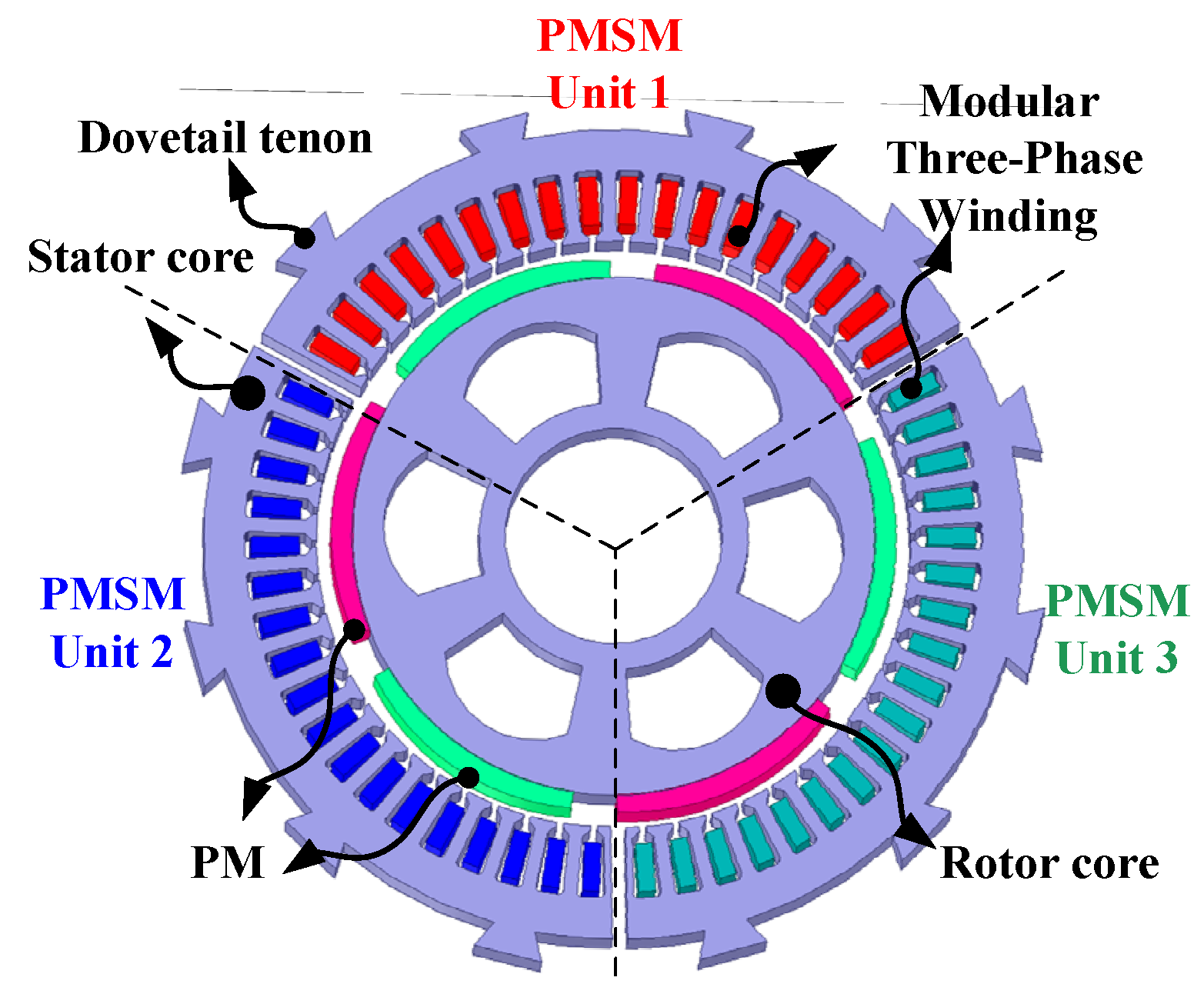

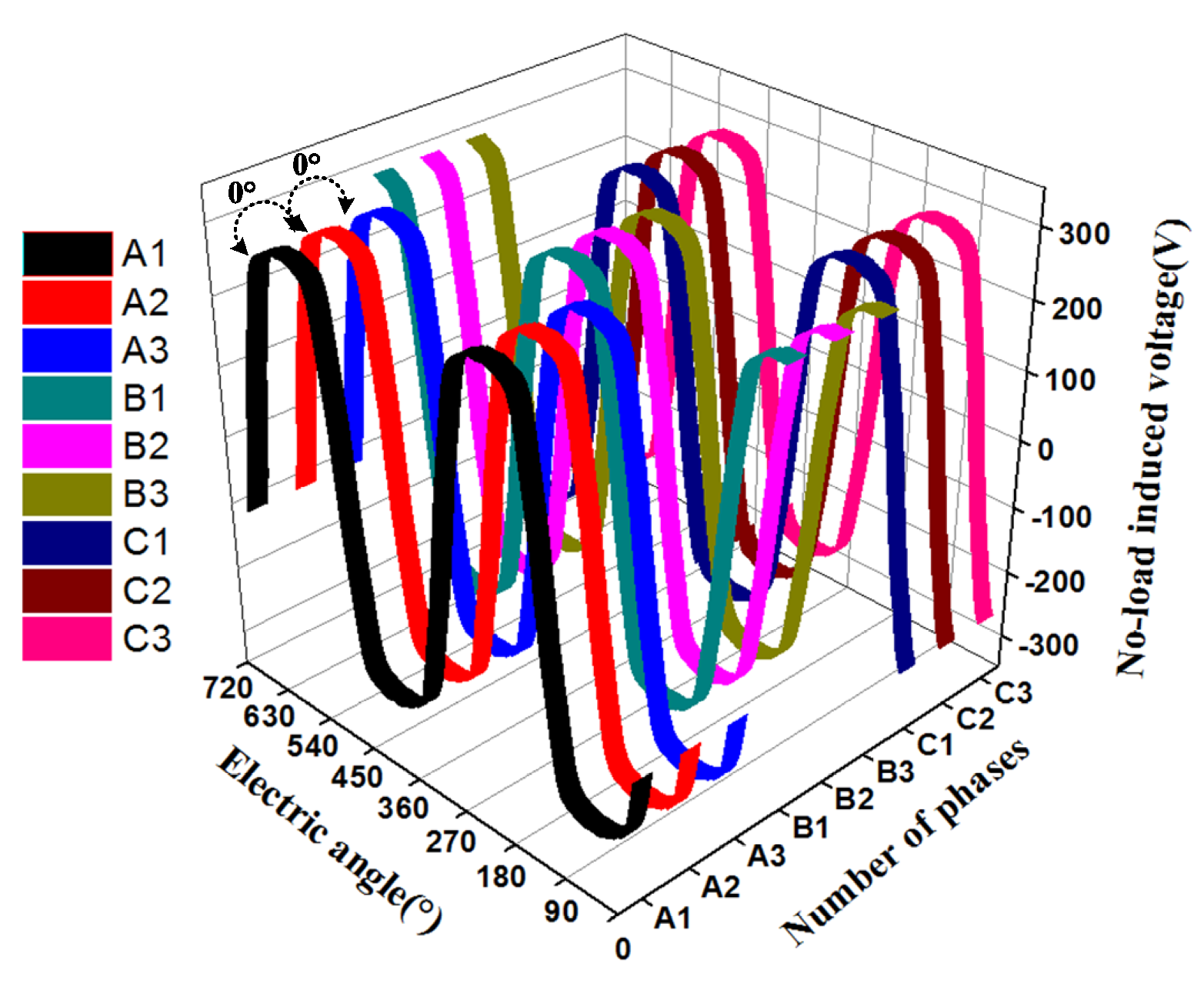


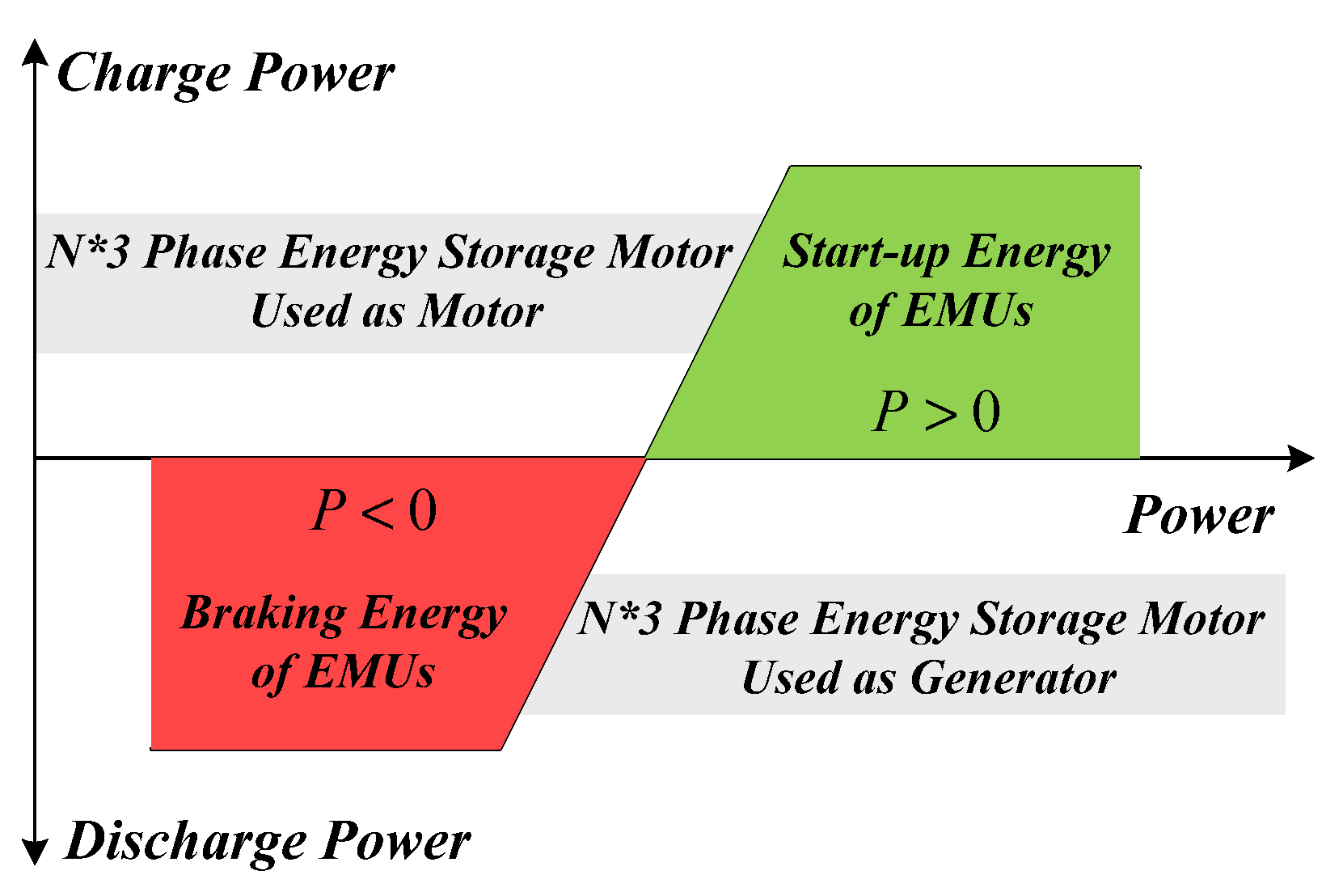
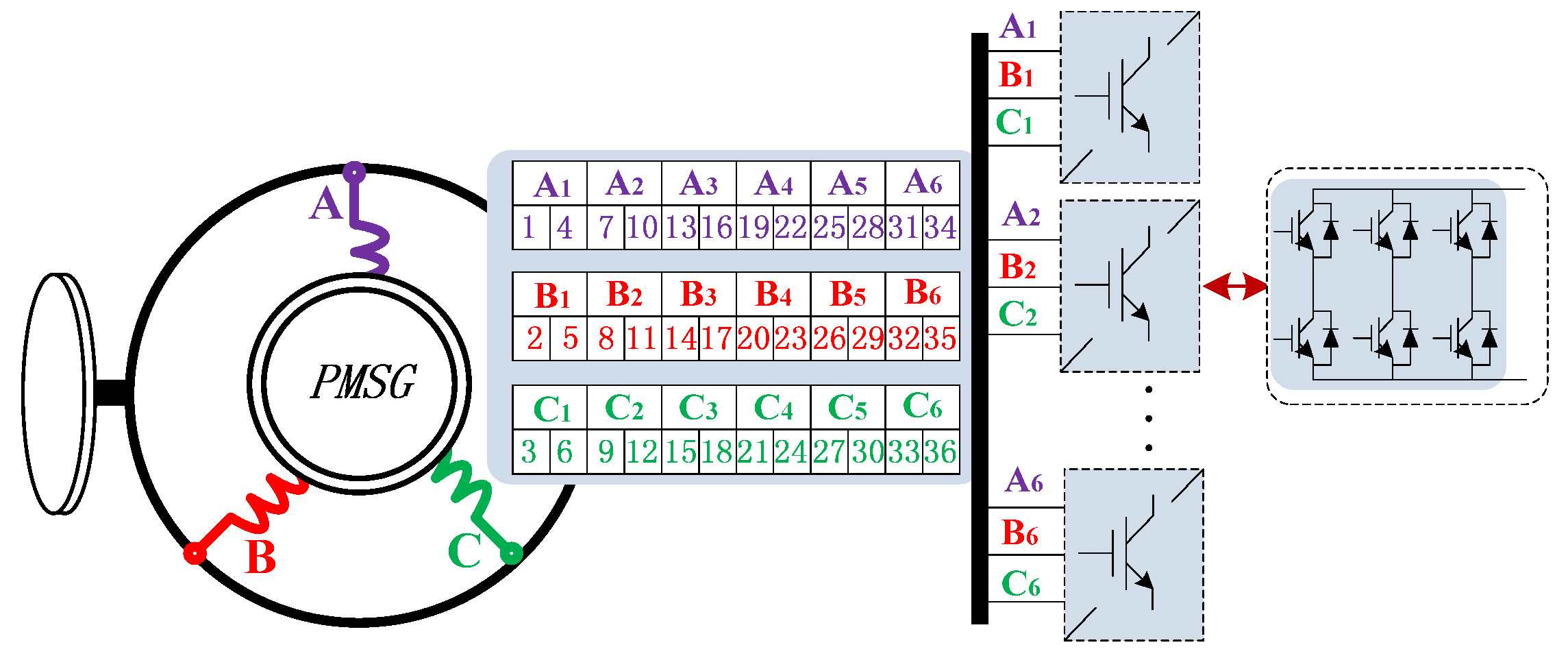
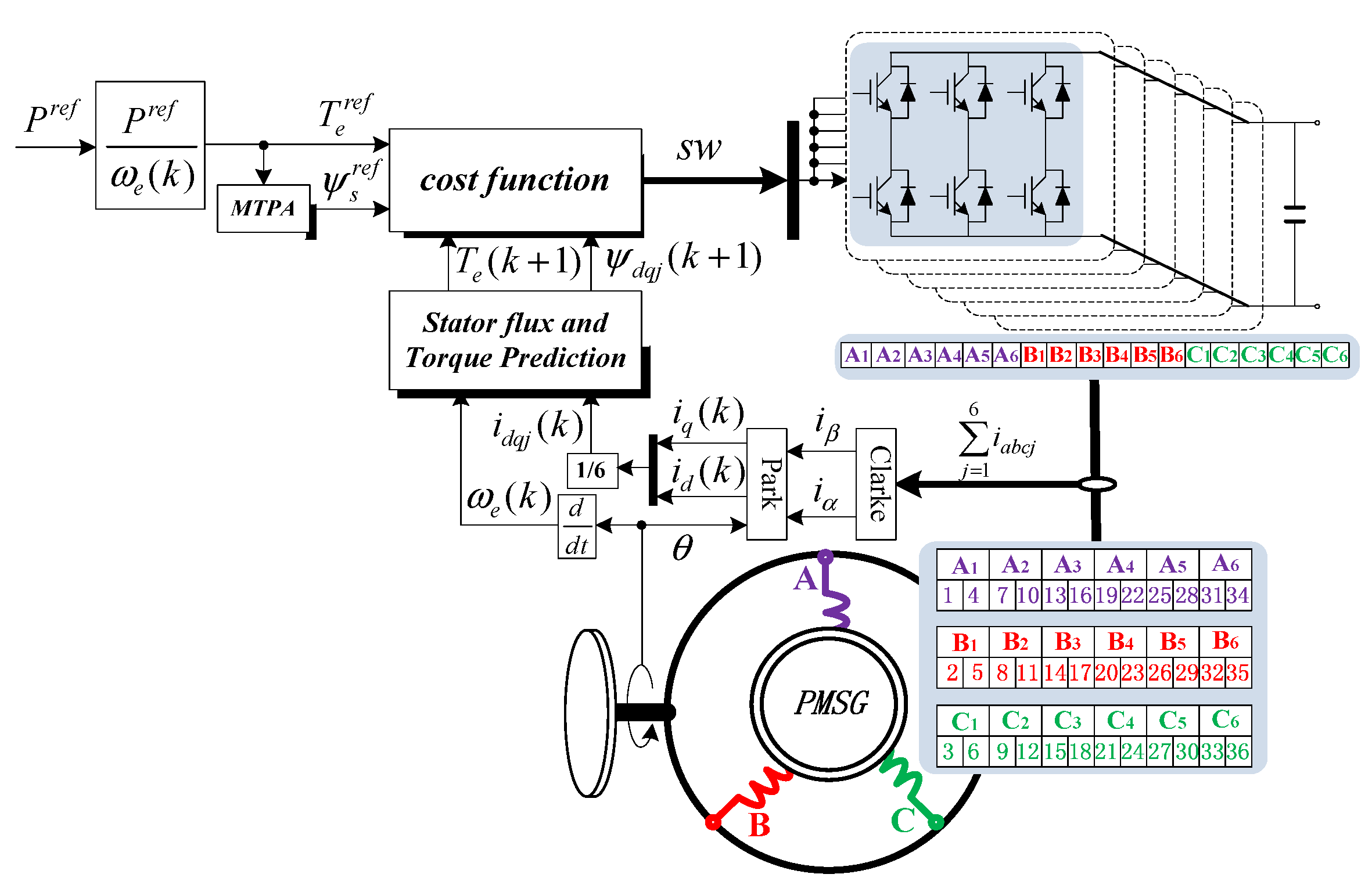

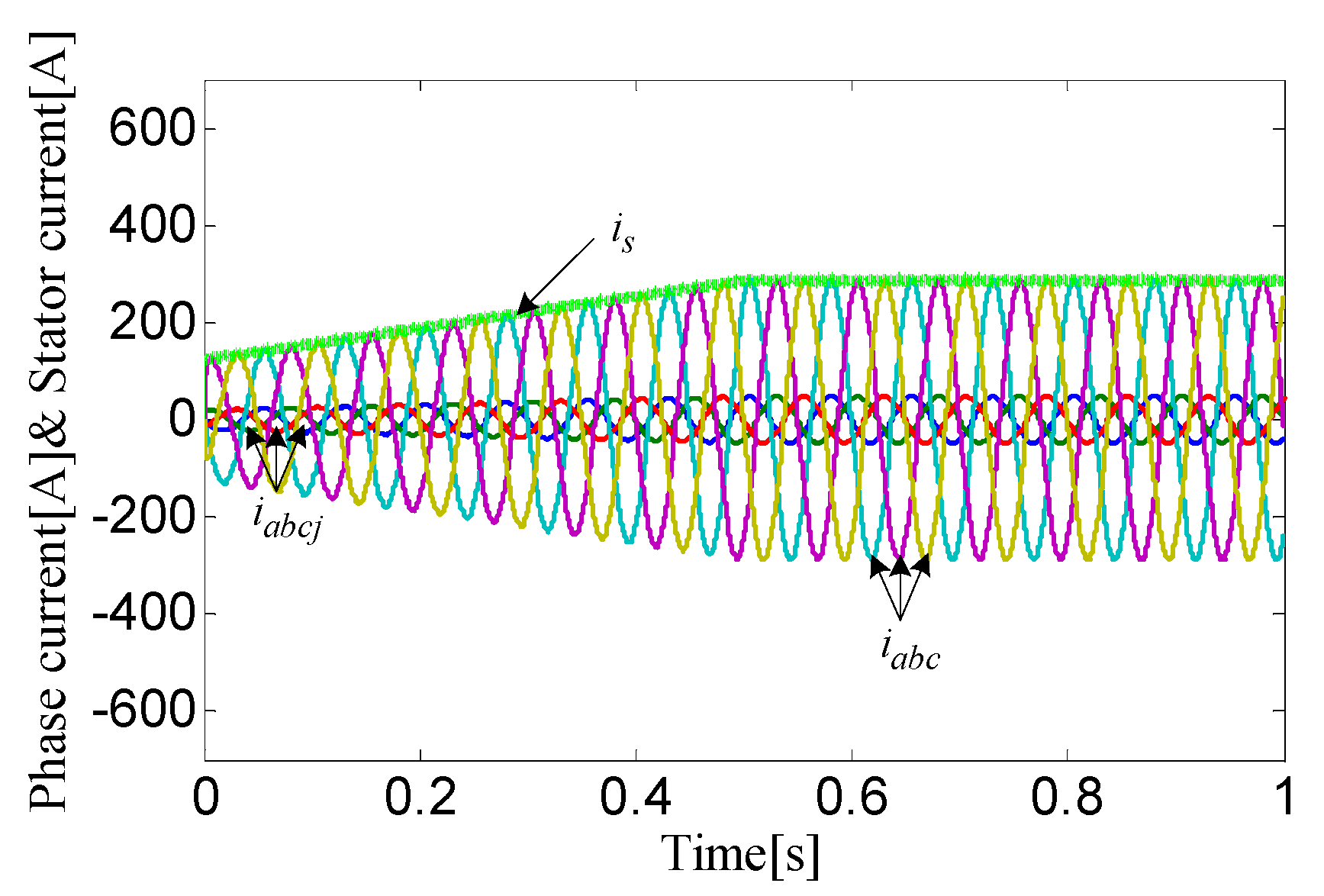
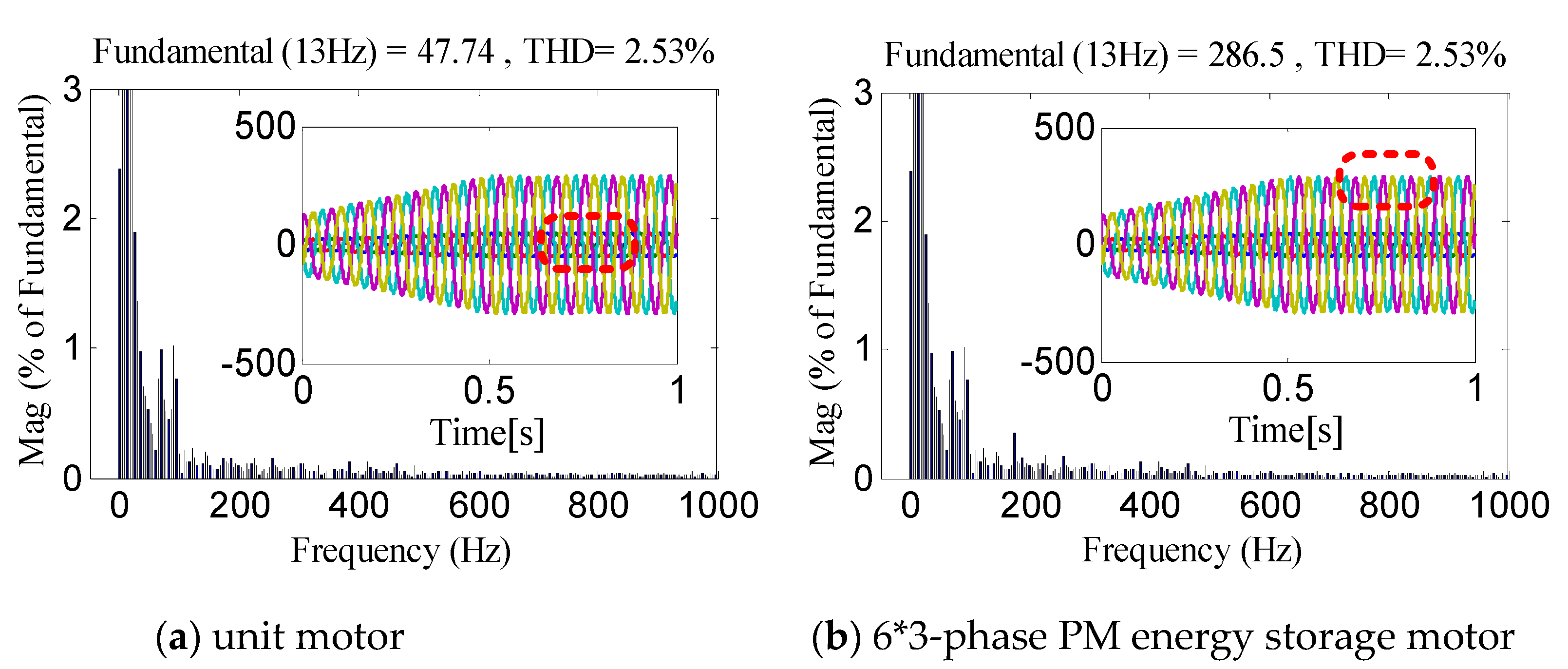
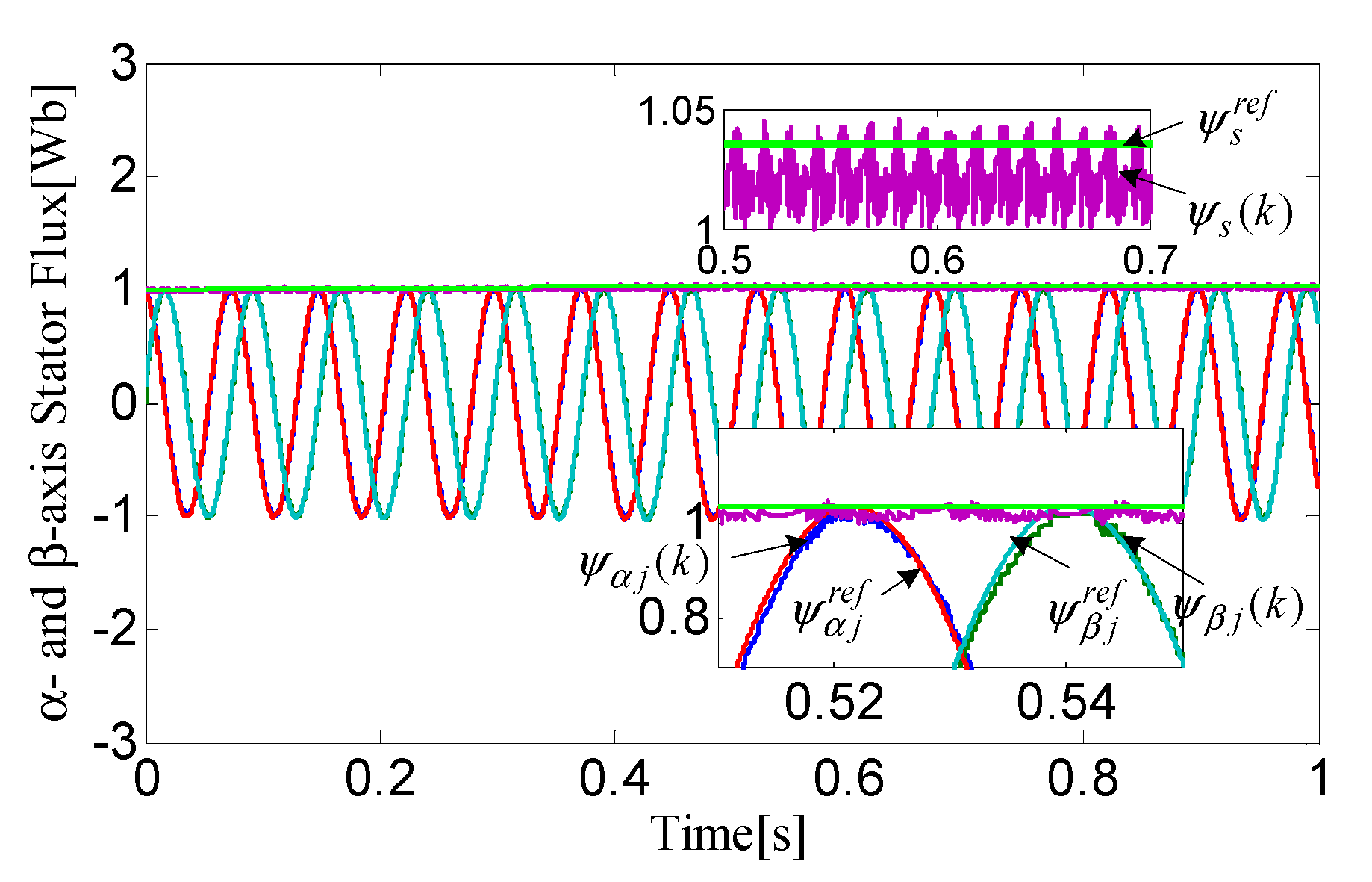
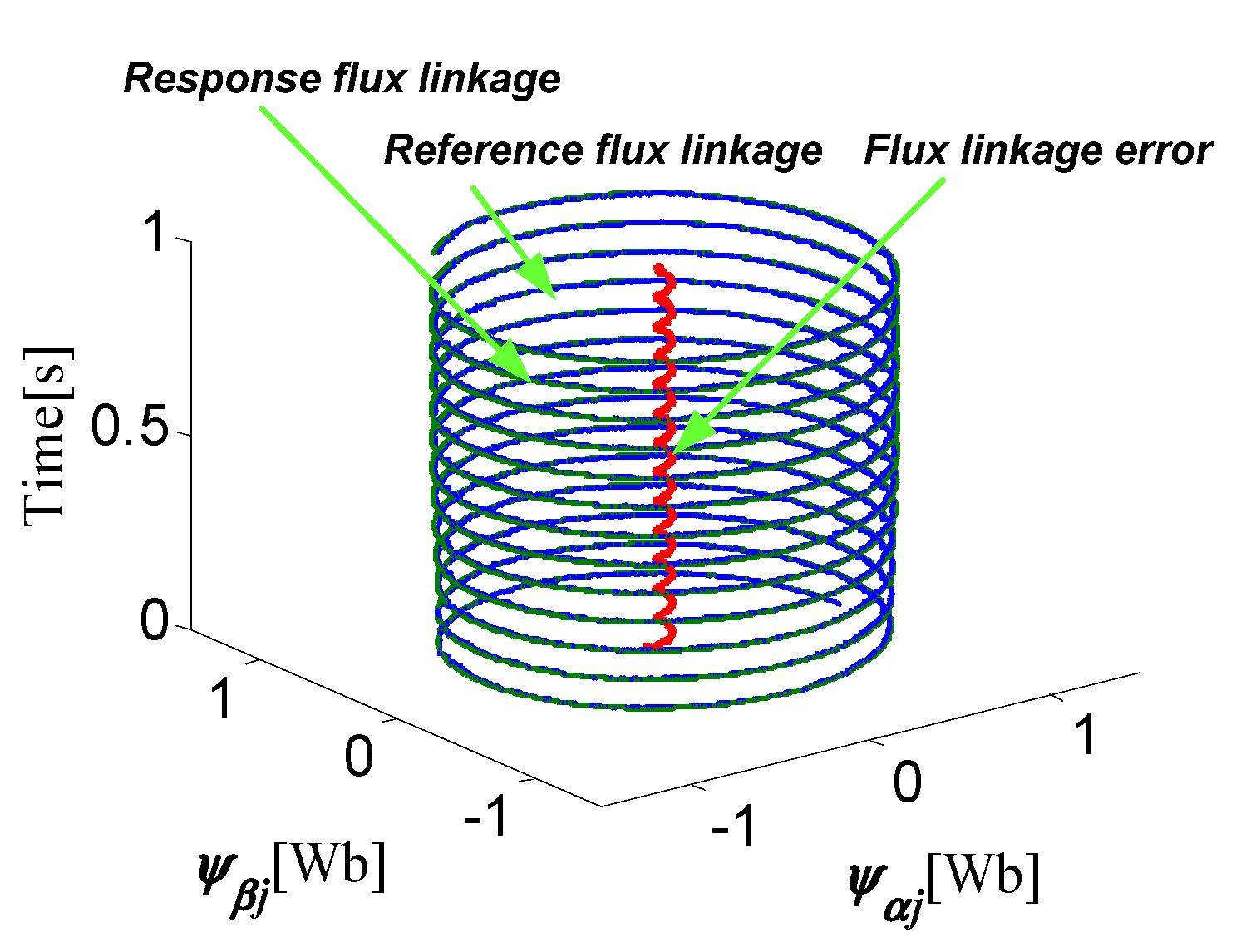
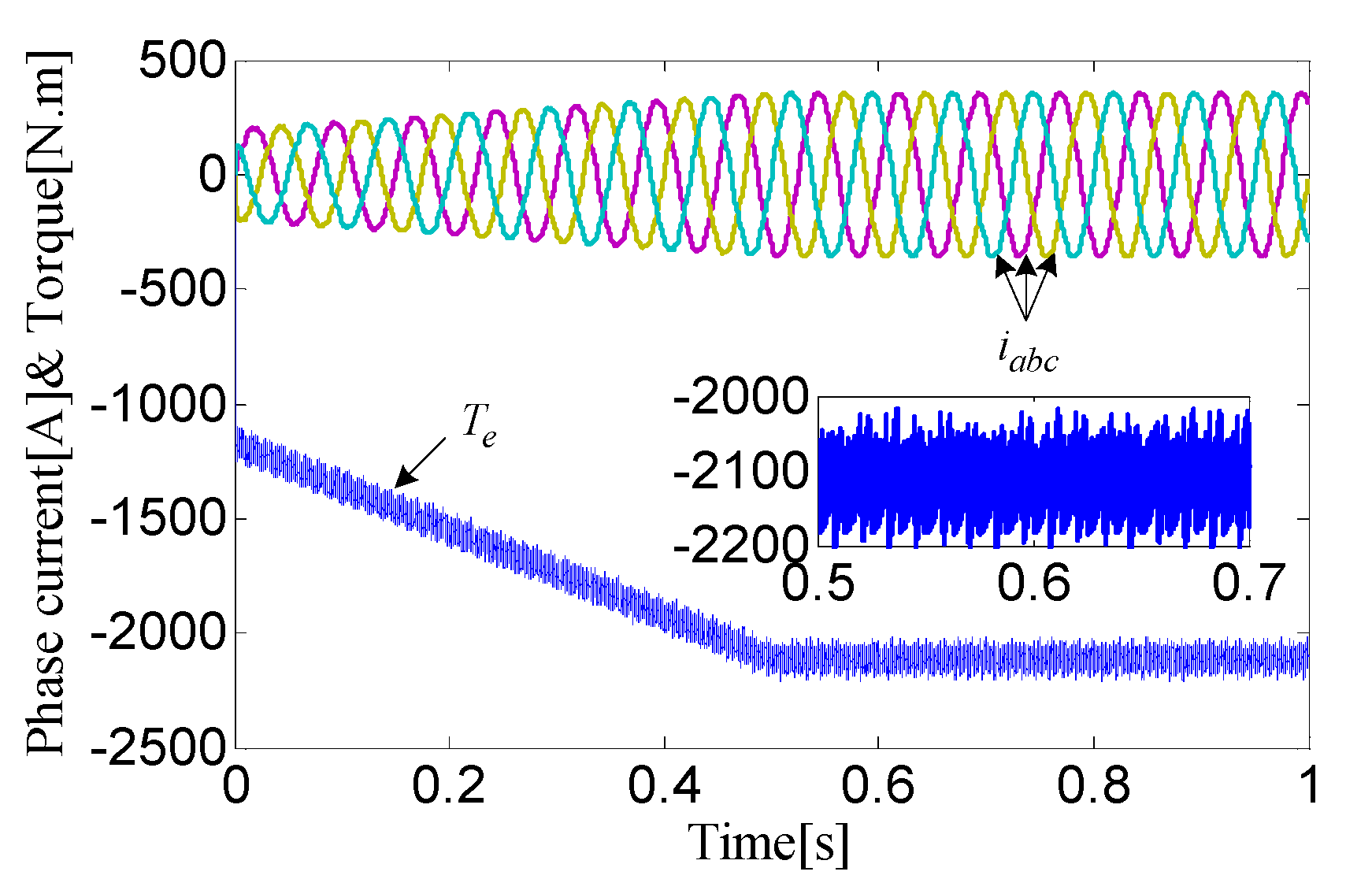
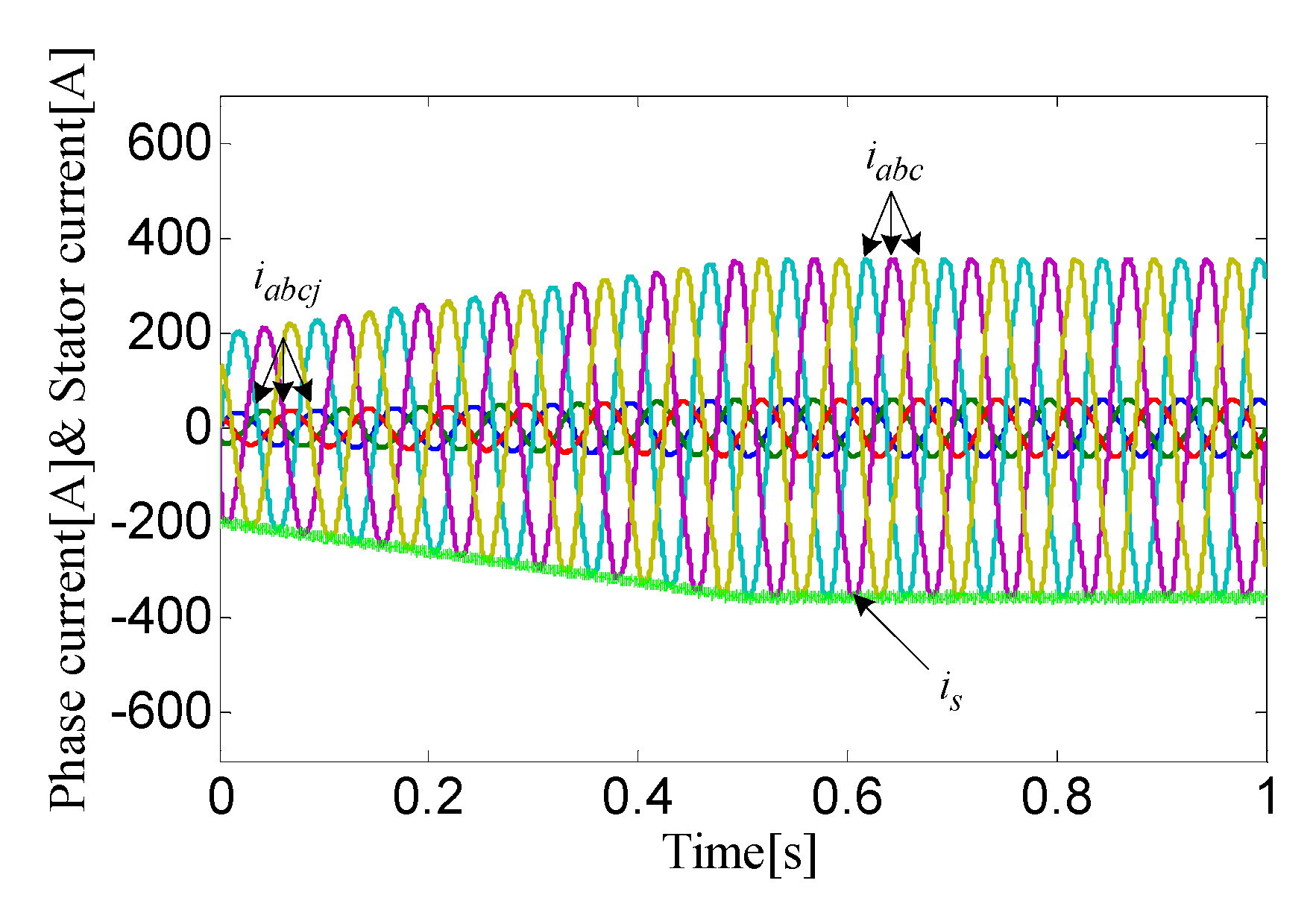
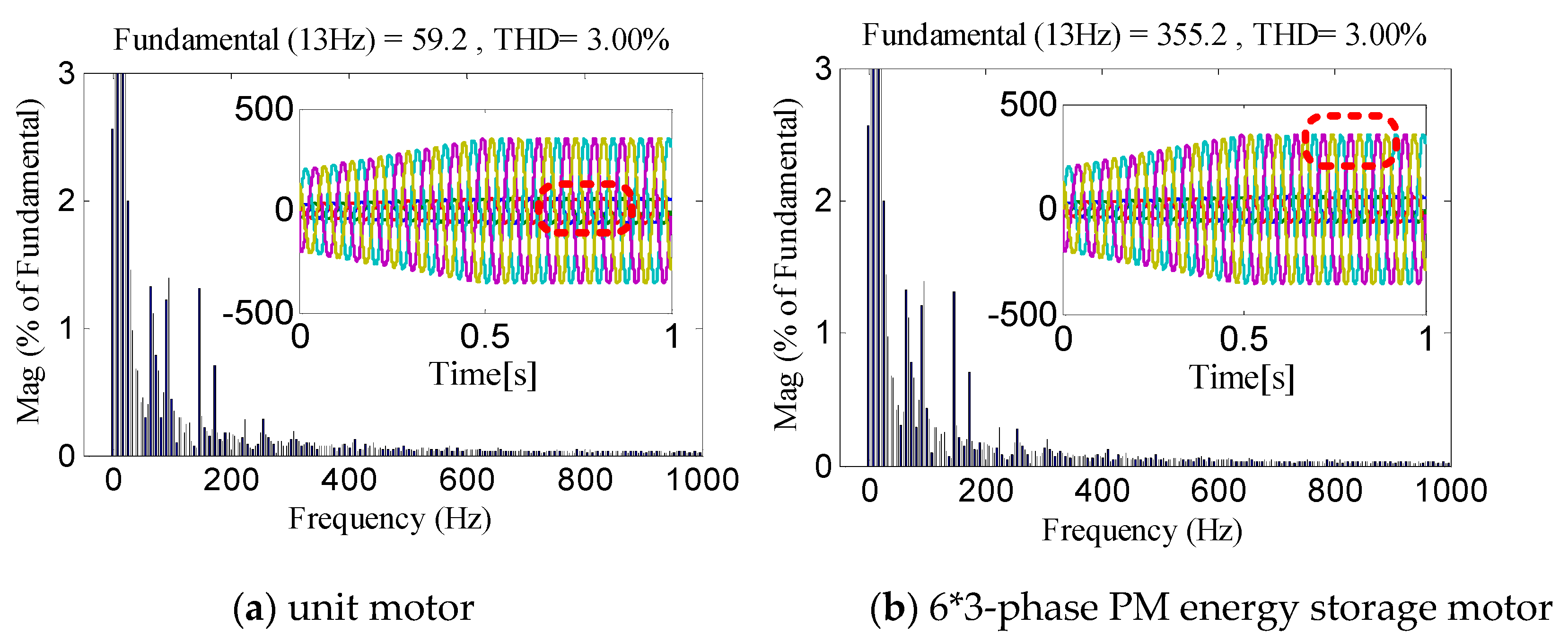
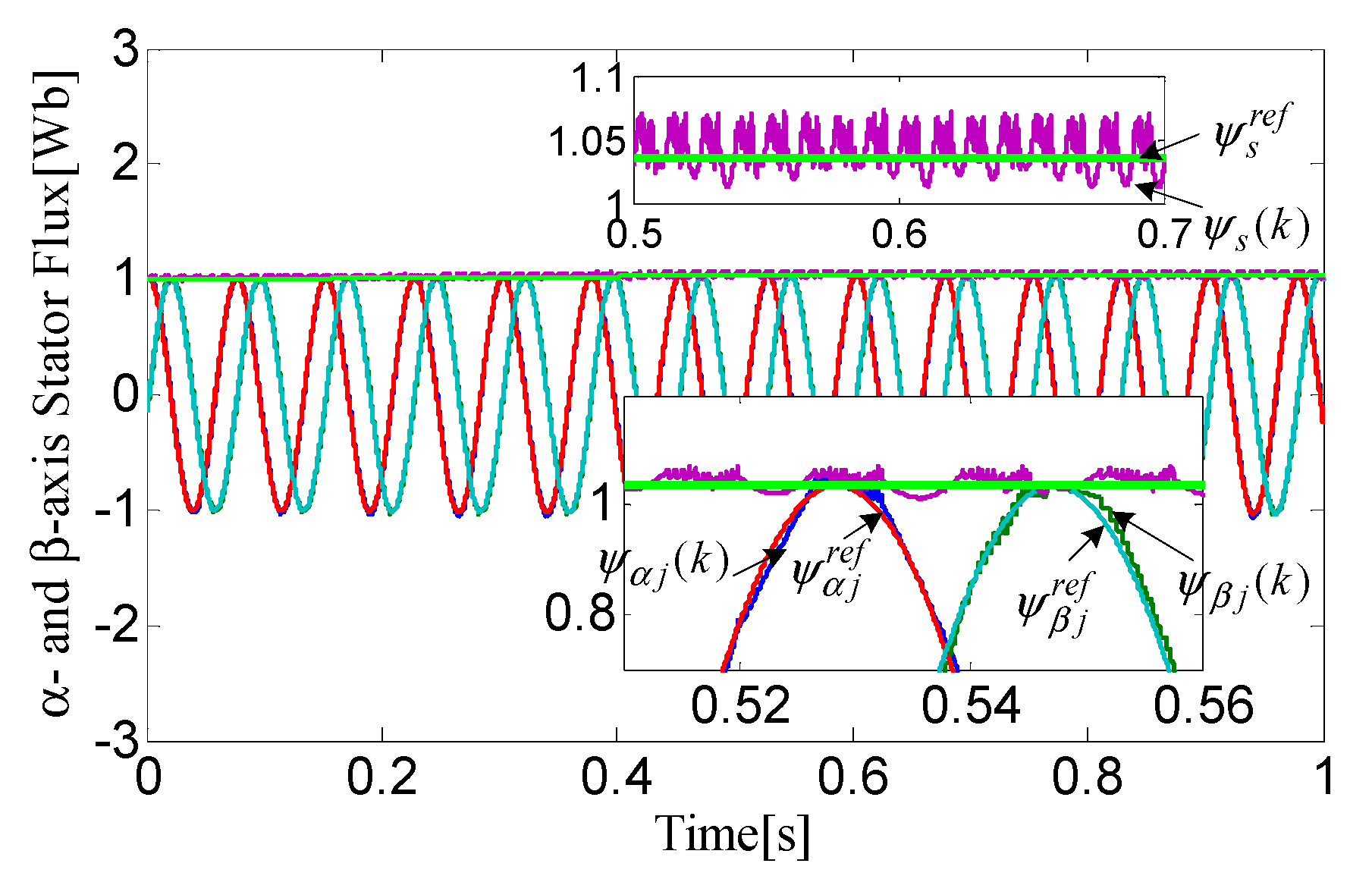
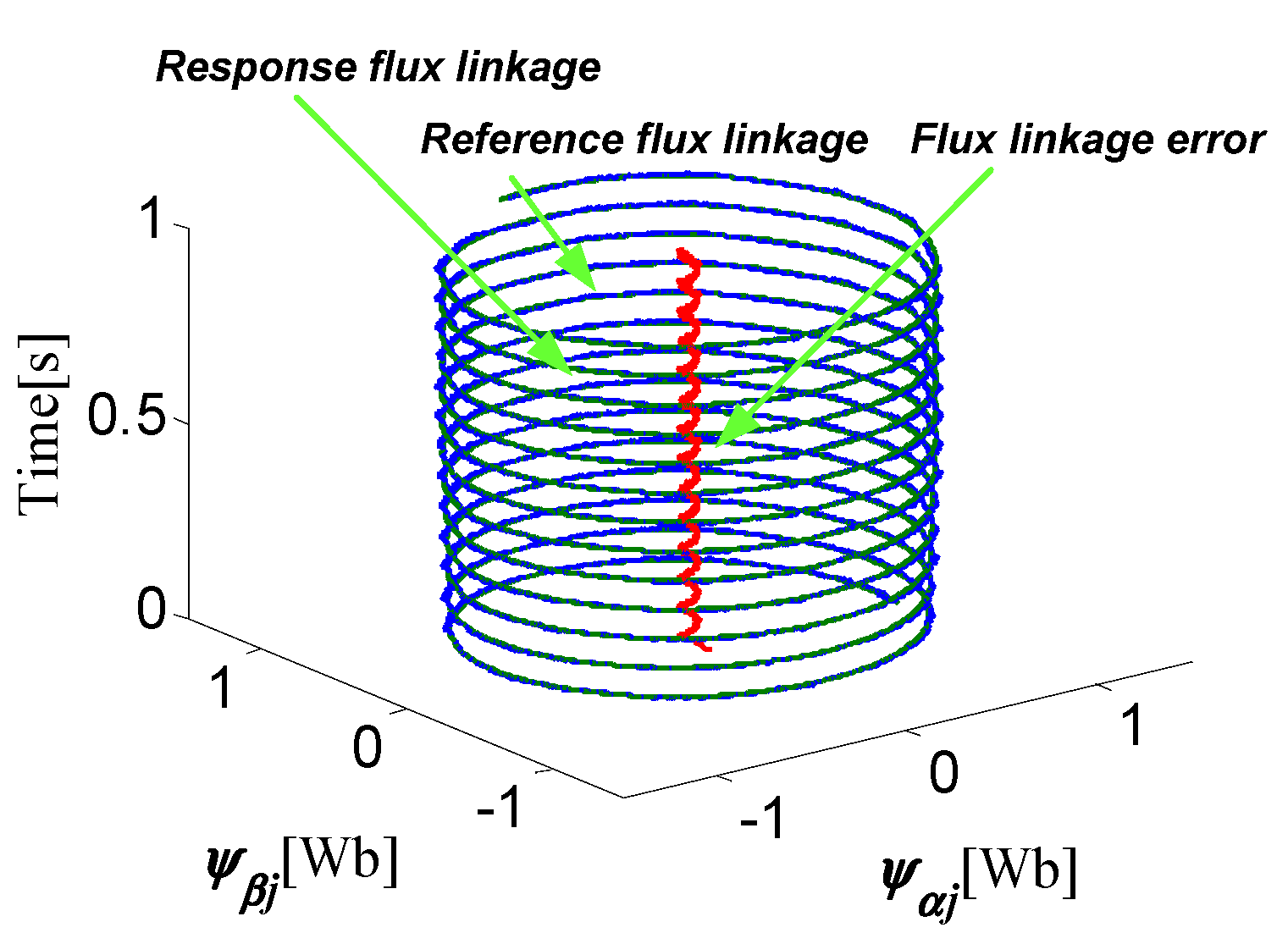

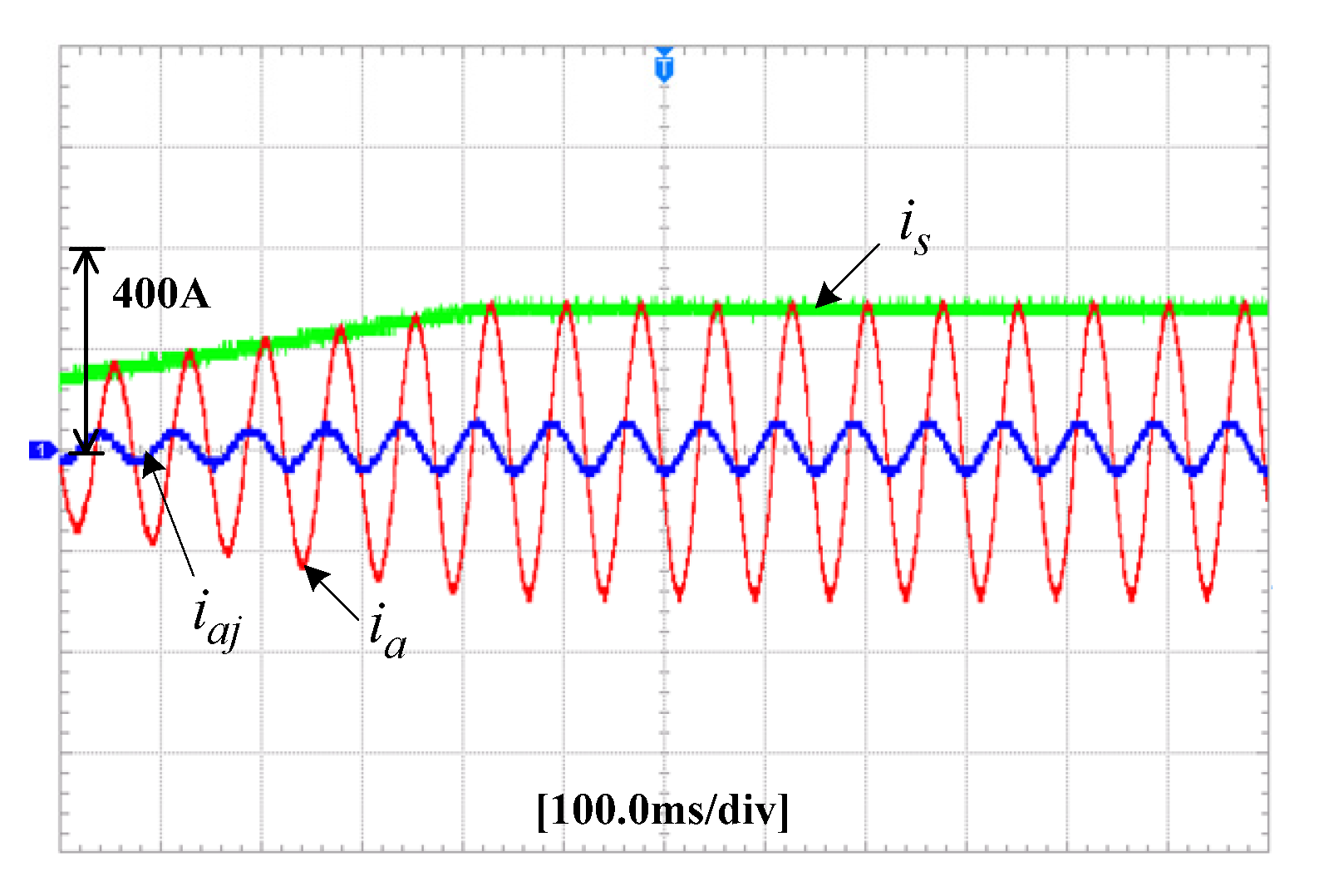


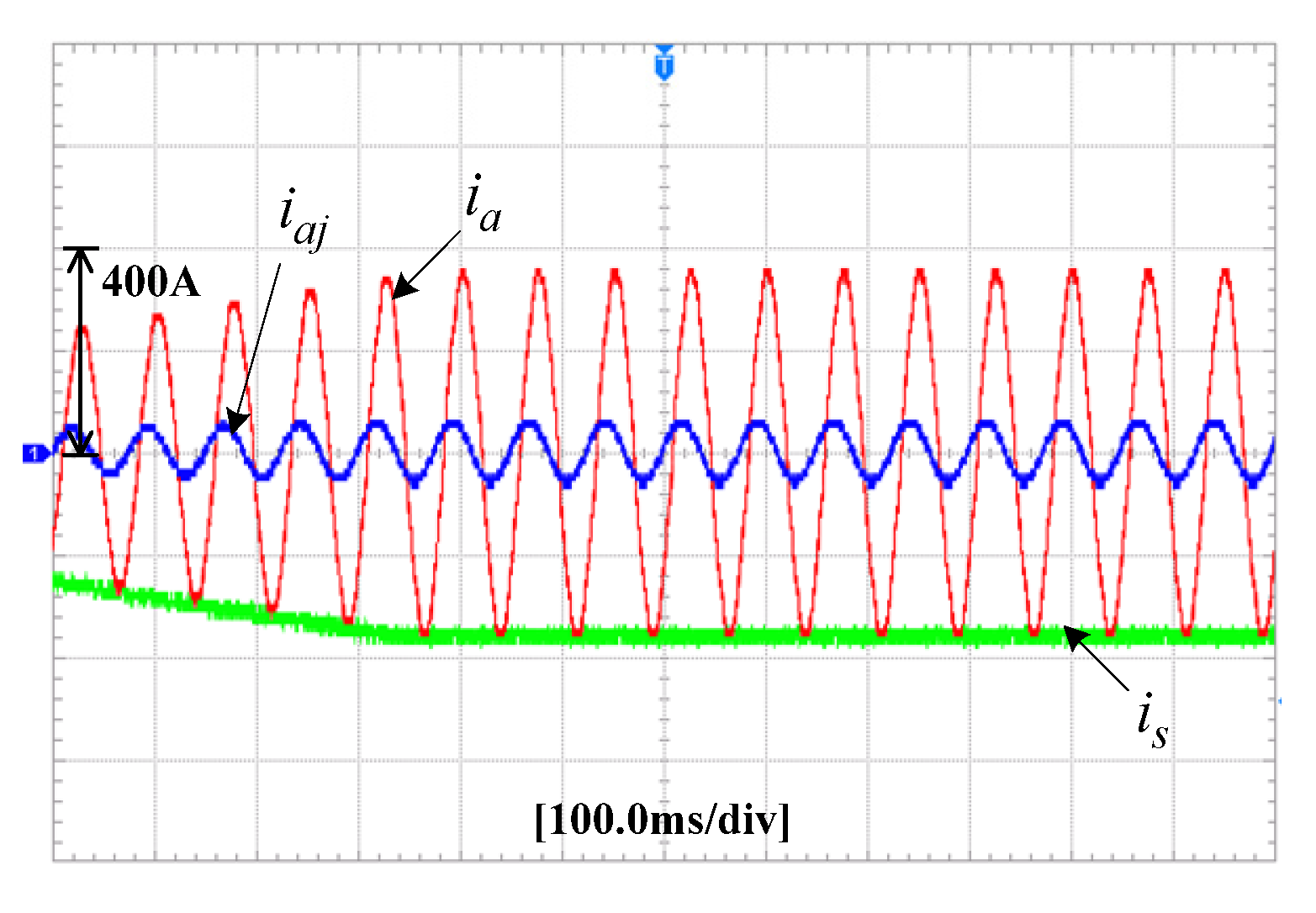
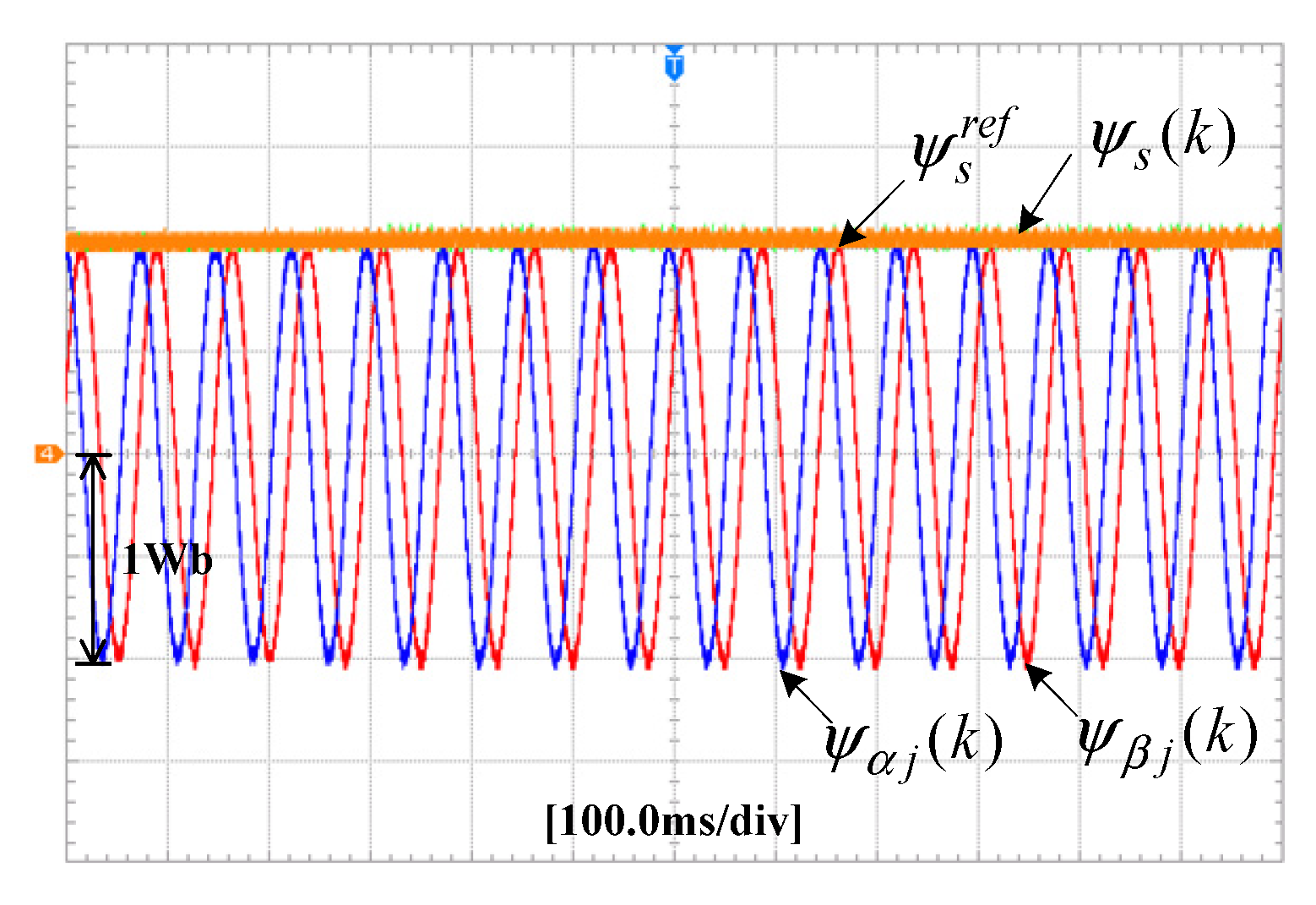
| Parameters | Value |
|---|---|
| Stator phase resistance (Ro) | 0.026 Ω |
| Number of pole pairs (np) | 4 |
| Inductances (Lo) | 5.572 mH |
| Flux linkage of PM (Ψro) | 0.992 Wb |
© 2020 by the authors. Licensee MDPI, Basel, Switzerland. This article is an open access article distributed under the terms and conditions of the Creative Commons Attribution (CC BY) license (http://creativecommons.org/licenses/by/4.0/).
Share and Cite
Zhang, W.; Wu, G.; Rao, Z.; Zheng, J.; Luo, D. Predictive Power Control of Novel N*3-phase PM Energy Storage Motor for Urban Rail Transit. Energies 2020, 13, 1578. https://doi.org/10.3390/en13071578
Zhang W, Wu G, Rao Z, Zheng J, Luo D. Predictive Power Control of Novel N*3-phase PM Energy Storage Motor for Urban Rail Transit. Energies. 2020; 13(7):1578. https://doi.org/10.3390/en13071578
Chicago/Turabian StyleZhang, Wenjuan, Gongping Wu, Zhimeng Rao, Jian Zheng, and Derong Luo. 2020. "Predictive Power Control of Novel N*3-phase PM Energy Storage Motor for Urban Rail Transit" Energies 13, no. 7: 1578. https://doi.org/10.3390/en13071578
APA StyleZhang, W., Wu, G., Rao, Z., Zheng, J., & Luo, D. (2020). Predictive Power Control of Novel N*3-phase PM Energy Storage Motor for Urban Rail Transit. Energies, 13(7), 1578. https://doi.org/10.3390/en13071578





